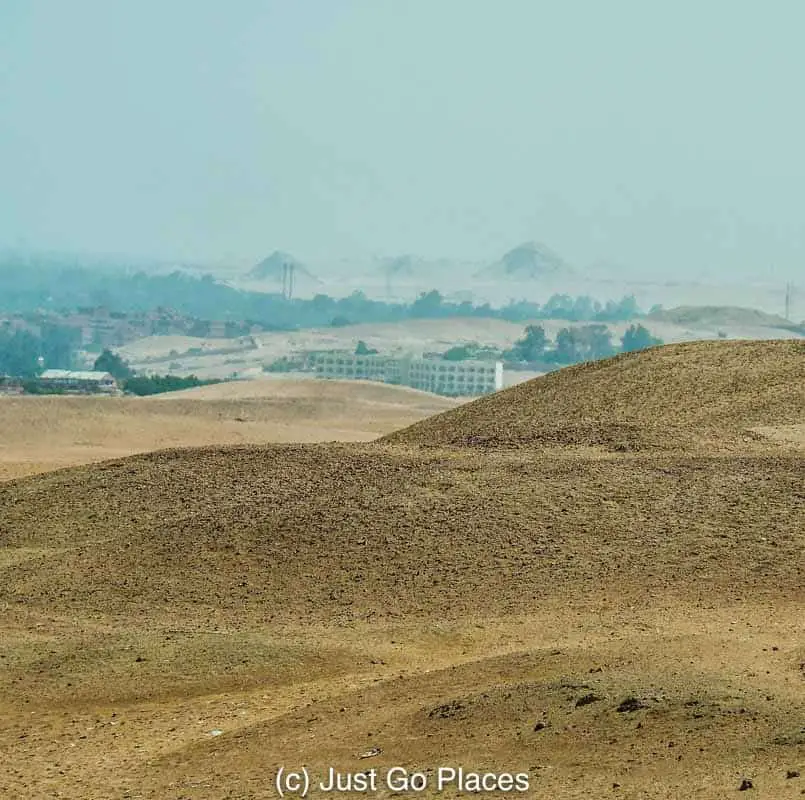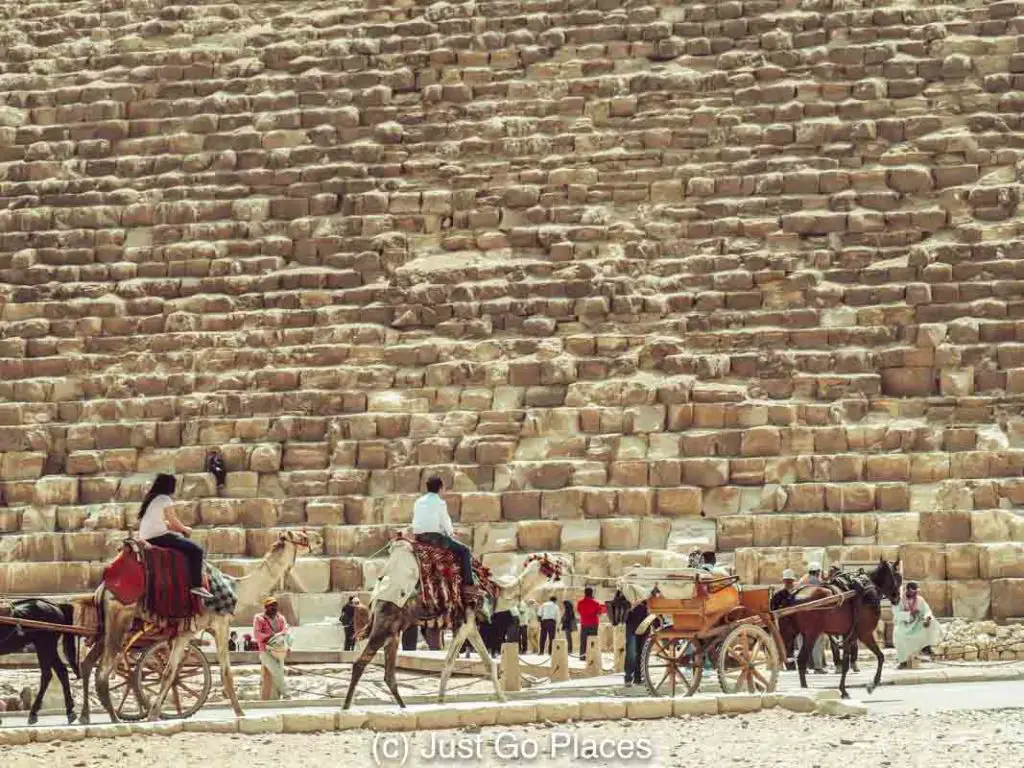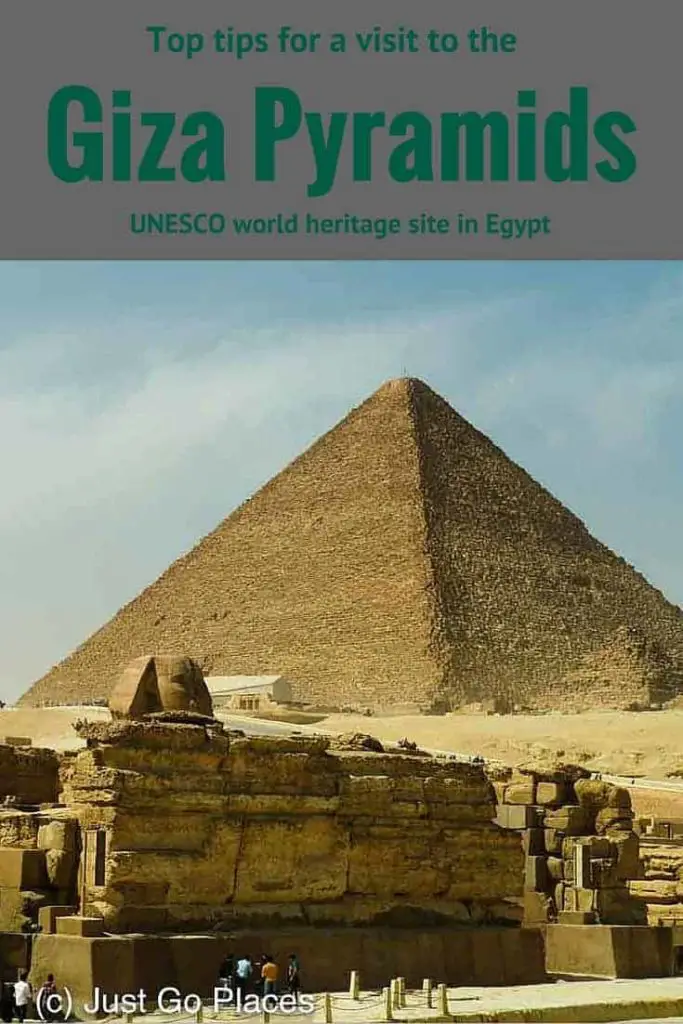Think you know about the Egyptian pyramids? Think again. My children who had studied ancient Egypt in school were desperate to visit the pyramids. Having spoken to enough people to gauge safety issues, I decided a day trip to visit the pyramids at Giza would work.
Here are some cool facts that you can trot out to impress your kids (or tour guide). We had a private guide to take us to the pyramids in Giza as well as around Cairo.
Our tour guide only knew the history he had memorised so it was helpful that we had learned some stuff ourselves beforehand. The tourist industry in Egypt has taken a hit with recent events and I expect there are a lot of guides out there of varying quality. Of course, you can visit the pyramids on a self-guided tour.
Contents
Egyptian Pyramids Generally
Each pyramid took decades to build. Pharoahs would start building their pyramid and other funeral preparations as soon as they ascended the throne.
A pharaoh’s priests told them where it was auspicious to build the pyramid. There are about 140 pyramids scattered throughout Egypt. From the pyramids at Giza, on a clear day you can see some of the older pyramids in the distance.

In the distance you can see the steppe pyramids from an era even older than the Giza pyramids.
Egyptian pyramids were built on the West bank of the Nile. Generally, the East bank of the Nile was for maintaining life and the West bank was for death.

The Pyramids of Giza
The Pyramids of Giza, built about 4500 years ago, were a wonder in the ancient world and are a phenomenon still today. In fact, the Great Pyramid is the only wonder of the ancient world that is still in existence today.
The pyramids of Giza were built with granite on the inside carted from miles away near Luxor. They were covered in polished limestone. Shining in the bright Egyptian sun, they could be seen as far away as Israel!
The pyramids in Giza held up so well through they years because of the mortar used to hold the blocks together. To this day, however, no one knows what this mortar contains.

You can climb up the pyramids on the outside to a certain extent. Each ‘brick’ is gigantic in size.
A large portion of the limestone covering of the Giza pyramids was ‘recycled’ by Saladdin to create his citadel in Cairo. In the photo below, you can see some of the smoother remaining limestone.

The pyramids at Giza are precisely aligned with the constellation of Orion. This placement was deliberate because Orion was associated with Osiris, the Ancient Egyptian god of the dead.
The Great Pyramid of Giza (the pyramid of Khufu) was the tallest structure in the world for nearly 4000 years. Created with approximately 2.3 million blocks, some of these blocks weigh as much as 50 tons. In total, this pyramid weighs 5.9 million tons.

The second of the Giza pyramids, that of Khufu’s son, Khafre, was built on higher ground so that it looked from a distance to be as impressive as the pyramid of Khufu. Khafre didn’t have the money to build a larger pyramid and so used this illusion. Clever!
The tunnel inside the pyramid was only large enough to carry the sarcophagus inside. Everything else the pharaoh needed for his afterlife such as beds and chariots were assembled inside the pyramid.
Our guide was careful to point out that slaves were NOT used in the building of the pyramids. Basically, a pharaoh would start on his pyramid as soon as he ascended the throne. If you consider that they thought of the afterlife as a continuation of their current life, it’s not as macabre as it seems. During the non-farming seasons (because cultivation along the Nile could only follow the Nile flooding patterns), the farmers were paid to work on the Pharaoh’s pyramid during their downtime. They were paid in food and goods to tide their families over until the next harvest season.
Visiting the Pyramids
Here are my top tips for a family visit to the Giza pyramids.
Having read about Gary Arndt’s visit to the pyramids, I was prepared for the hassle. We had a better experience than Gary because of our guide. Of course, even the guide tried to get extra money out of us but I feel we came out better than if we had been on our own. I don’t have the patience for large tours and so that was not even an option.
In Egypt, everyone is trying to get money from you. Everything, even a visit to the bathroom, requires a tip to the attendant. We did the obligatory camel ride (negotiated, and I use the term loosely) between the guide and his trusted camel ride provider.

The camel guy was a pro at taking tourist photographs. Can you believe the pyramids were swarming with tourists but there aren’t any in the photos? I was seriously impressed.

Here, we look like we are in the middle of the desert. Nope. The pyramids are surrounding by residential buildings, hotels, and tourist stores on several sides.
The guide did keep most of the souvenir touts away from us much to their fury. I am thankful because I find it difficult to manage the children with people sticking merchandise in front of their faces. After our experience in the souks of Marrakech, my children knew better than to take anything from anyone even if it was thrust into their hands.
Our guide also recommended going into Khafre’s pyramid instead of Khufu’s. I would definitely suggest that as well. The tunnel in Khafre’s pyramid is about a 1/3 shorter to navigate which is a blessing when you are hunched over going up and down steps.

My daughter (who is a little over 4 feet) was the only one of us who did not have to bend down to walk. By the way, there is only one tunnel to go in and out. So that narrow passage has to accommodate two lanes of traffic.
I spoke to people from our hotel who chose not to go inside the pyramids. They did not miss much because there is very little to see inside. You go inside the pyramid just to say you have been inside a pyramid.
The Sphinx statue is located a bit further away from the pyramids at Giza but in its general vicinity. The temple area near the Sphinx is where the pharaoh’s body was prepared for embalmment and burial by his priests. Most people drive down to the Sphinx area as opposed to walking in the oppressive heat followed by souvenir vendors.

Some top tips for a visit to the Giza Pyramids.
Overall, our family visit to the pyramids of Giza was an amazing experience and I would highly recommend it. You really get no sense of the scale of the structures until you are up close and personal beside it.
[/et_pb_text]
[/et_pb_column]
[/et_pb_row]
[/et_pb_section]

